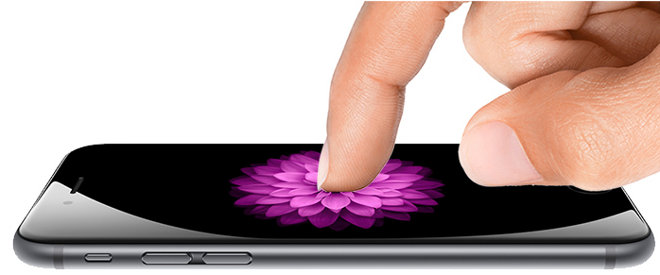What exactly is Force Touch? To most not familiar with the new Macbook or Apple Watch it probably sounds like a move out of Luke Skywalker's playbook. Force Touch is a technology that Apple developed in which a tap is detected on a track pad or other surface (such as an Apple Watch screen) and responds differently to variations in pressure. In other words you can invoke different options, actions or menus based on the amount of pressure you use with your finger.
Force Touch is a welcome addition to the Apple Watch and is a necessary feature for a device that has limited screen real estate and few hardware buttons. The ability to pull up a menu "hidden" behind the screen offers an added layer of functionality to even the basic Apple Watch app. Force Touch is supposed to make its way to the rumored "iPhone 6s" this fall and may actually be the signature feature for this iteration of the iPhone. As always 9to5Mac broke the rumor about Force Touch's inclusion in the new iPhone along with how it will function.
According to sources, the iOS version of Force Touch is known internally as “Orb.” Instead of opening up a large window of extra controls that did not fit on the screen, as is done on the Apple Watch, Force Touch on the iPhone is designed to skip existing lists of options or button presses. “There is consistent usage of Force Touch across the operating system to ‘shortcut’ actions,” rather than present new options like with the Apple Watch, according to a source.
On the surface Force Touch sounds like an exciting feature I would welcome to iOS. The fact is I'm on the fence. On one hand Force Touch will solve some issues such as apps that have too many options with nowhere to put them. A perfect case is Apple's very own Music app which was recently updated in iOS 8.4. When using the ellipsis menu to access options for a song or album you are presented with a lengthy pop up list of choices which not only is confusing but takes a few looks just to figure out what you are looking for. This problem could easily be solved by using Force Touch technology. Long pressing on an individual song could add it to the up next queue or present you with a share sheet to choose between sharing options. In a perfect world the Force Touch options would be customizable per user so you can choose what each function will offer based on what you use the most. Typically this kind of customization is something Apple does not provide out of the box but adds down the line once enough demand for the feature is felt. To make Force Touch user friendly a section within Settings to customize each apps' Force Touch options would be ideal and welcomed.
How Do You Use This Thing?
In order for Force Touch to be successful it has to be user friendly. Which is the reason I'm on the fence about it. As a power user I will adapt and figure out all the ins and outs of the technology and eventually learn everything the same way I did with all the gestures that came with each new version of iOS and OS X. I worry a feature such as Force Touch, which may wind up being the signature feature of the "iPhone 6s", will fall short of expectations for a new device. I can already hear the complaints about the lack of innovation due to simply moving a feature from the watch into the phone. In a world where innovation is required with every new phone, the common user of the iPhone may not even realize Force Touch is part of the new device.
Whenever a new capability or API is introduced into iOS developers can get a little design and feature happy. I'm afraid this is going to happen with Force Touch and a bevy of features will be hidden from users who have no idea how to access them. Pressing buttons and swiping levers on a screen are obvious ways of UI and UX interaction but remembering to press harder may not be a natural way of interacting with a device for most people.
Force Touch may also have an awkward feel when using it with an iPhone. The great thing about Force Touch on the Apple Watch is you have your wrist as a "platform" for your watch to lean on while applying pressure. You receive the haptic feedback on your arm while using Force Touch to let you know it's activated. Force Touch on iOS is expected to provide a physical feedback that feels "nice" and "consistent" across the OS.
What Else To Expect?
The details on Force Touch and it's functionality are still rumors. One can expect shortcuts and faster actions all across iOS 9. According to Mark Gurman at 9to5Mac a few examples of what to expect from Force Touch is the ability to look up points of interest in the maps app and force touching on the location to immediately start navigation directions to Force Touching a track in the Music app to access a deeper set of options such as adding to the up next queue.
My concerns may be nitpicking and I'm sure I'll look back at this article and laugh. Apple always has a way of making what at first seems like non-essential features as key, commonly used features down the line that will make me say "how did I live without this before".
I'm holding out hope Apple isn't relying on Force Touch to sell the next iPhone and it's just one medium sized feature among many. If Apple was smart, they would keep the focus on camera upgrades and use Force Touch as a complementary feature not meant to sell the device.





